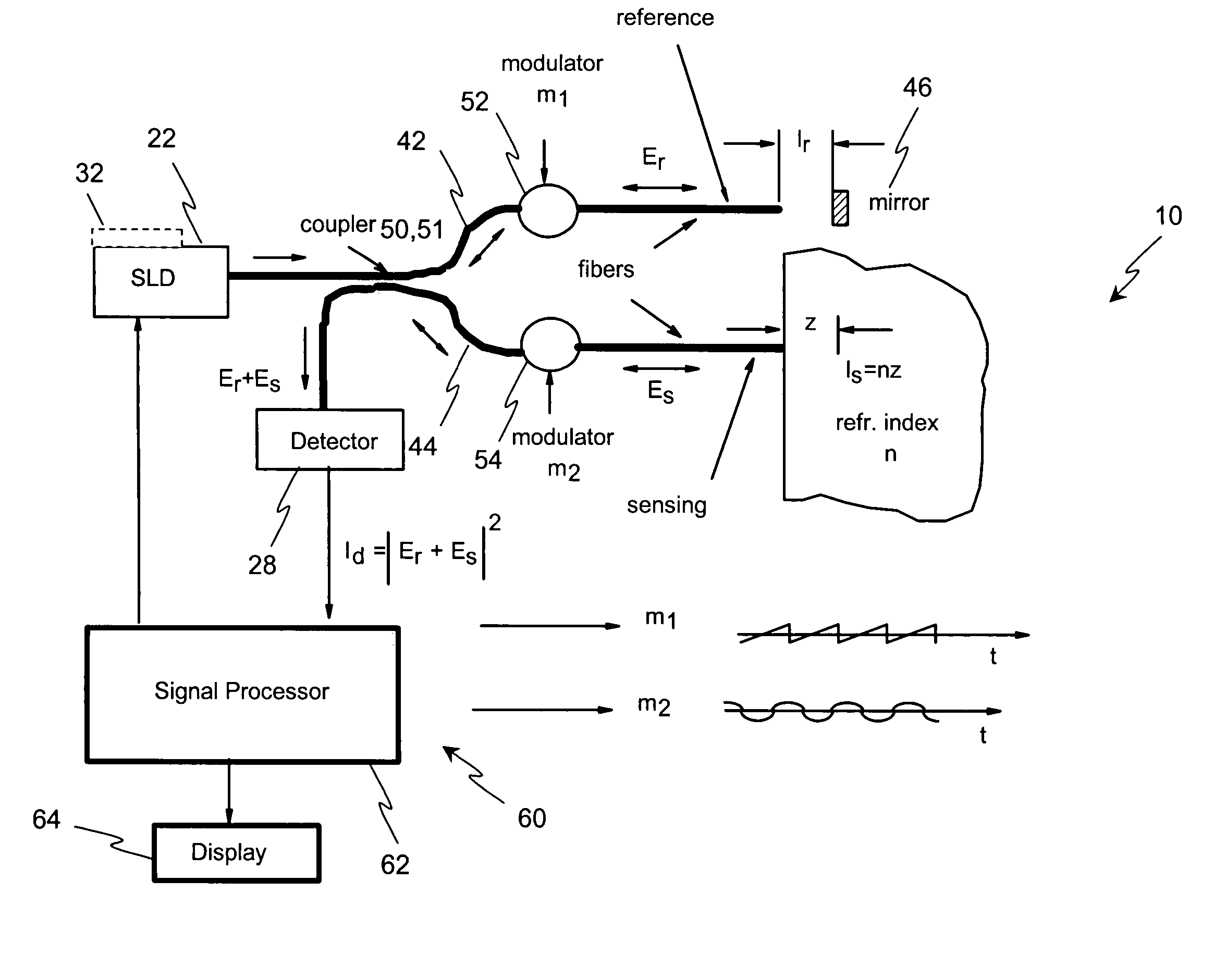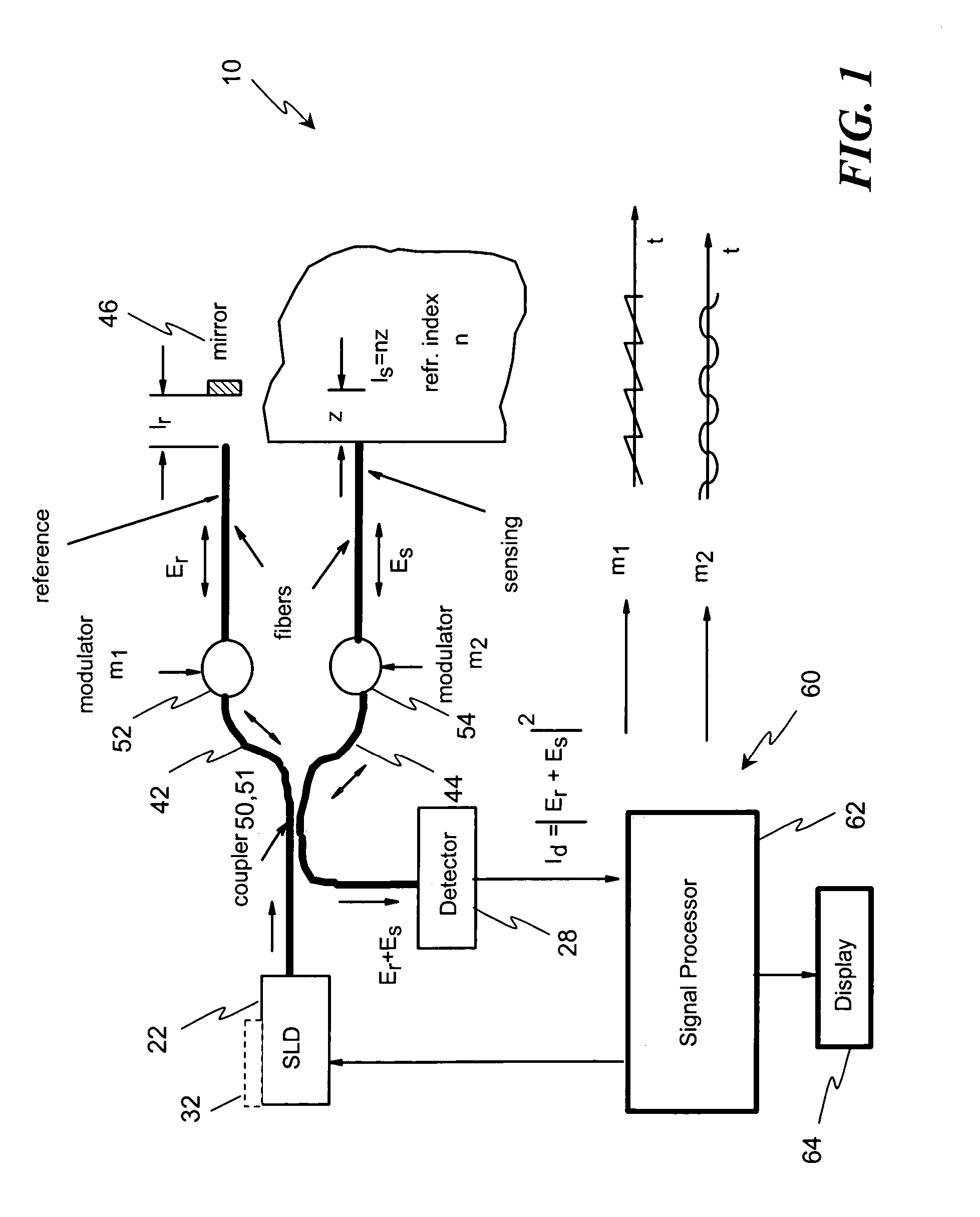Low coherence interferometry for detecting and characterizing plaques
a low coherence interferometry and plaque technology, applied in the field of low coherence interferometry for detecting plaques, can solve the problems of large number of victims of chd who are apparently healthy and die suddenly, the available screening and diagnostic methods are insufficient to identify victims, and plaques that are vulnerable may be buried inside the arterial wall
- Summary
- Abstract
- Description
- Claims
- Application Information
AI Technical Summary
Benefits of technology
Problems solved by technology
Method used
Image
Examples
Embodiment Construction
[0064]Disclosed herein, in several exemplary embodiments are high-sensitivity low coherence interferometric (LCI) systems (instruments) for optical metrology, for use in a variety of sensing and monitoring applications, including, but not limited to, trace chemical sensing, optical properties and changes thereof, medical sensing such as detecting and characterizing vulnerable plaques and others. In an exemplary embodiment, the instrument is miniaturized, using integrated optics components such as waveguides, splitters and modulators on a single substrate such as, but not limited to, a LiNbO3 (Lithium Niobate) chip. The exemplary embodiments may also involve the use of a “circulator” type of optical component, including of a polarizing beam splitter and quarterwave plate, which can be combined with the light source and detector into a miniature module that prevents optical feedback into the light source while doubling the detected light. Alternatively, instead of the polarizing beam ...
PUM
 Login to View More
Login to View More Abstract
Description
Claims
Application Information
 Login to View More
Login to View More - R&D
- Intellectual Property
- Life Sciences
- Materials
- Tech Scout
- Unparalleled Data Quality
- Higher Quality Content
- 60% Fewer Hallucinations
Browse by: Latest US Patents, China's latest patents, Technical Efficacy Thesaurus, Application Domain, Technology Topic, Popular Technical Reports.
© 2025 PatSnap. All rights reserved.Legal|Privacy policy|Modern Slavery Act Transparency Statement|Sitemap|About US| Contact US: help@patsnap.com



